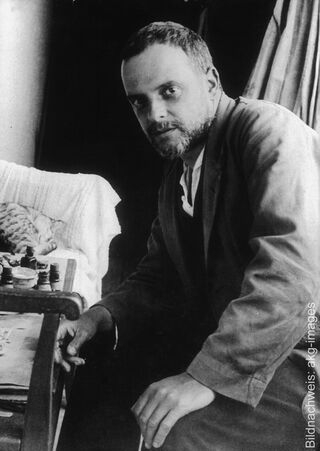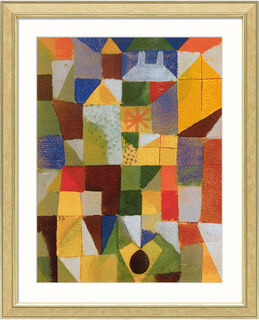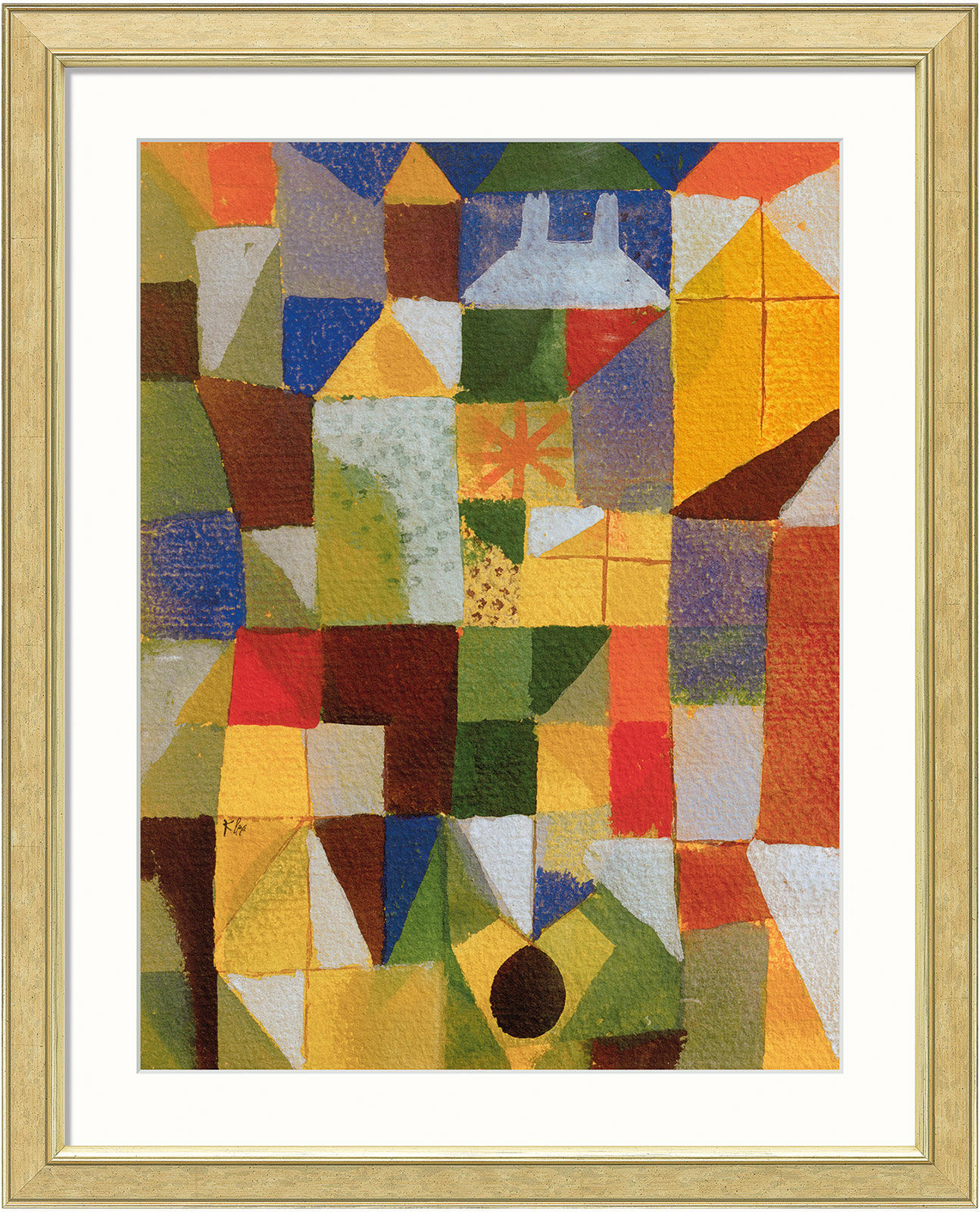Picture "Urban Composition with Yellow Windows" (1919), framed


Picture "Urban Composition with Yellow Windows" (1919), framed
Quick info
limited, 499 copies | numbered | reproduction, Giclée print on real handmade watercolour paper | framed | passe-partout | glazed | size approx. 58 x 47 cm (h/w)
Detailed description
Picture "Urban Composition with Yellow Windows" (1919), framed
Although the work is clearly abstract, it contains elements of reality: urban elements such as a church and two windows with mullions and transoms are clearly recognisable. The colourful, mosaic-like composition also makes the picture appear like a colourful church window in the overall impression.
Original: 1919, watercolour on paper on cardboard, 29.9 x 22.3 cm. Kurt Fried Foundation, Ulm, Ulm Museum.
High-quality Fine Art Giclée museum reproduction in 7 pigment colours on real handmade watercolour paper. Limited edition of 499 copies, numbered on the back. Framed in a golden solid wood frame with bevel cut passe-partout, glazed. Size approx. 58 x 47 cm (h/w).

About Paul Klee
He was called "the unique one" by his fellow artists: Paul Klee (1879-1940) shaped the understanding of modern art like hardly anyone else. With his mosaic-like composed works, he created a completely new style.
Born in Bern in 1879, Klee, a German-Swiss, turned out to be a double talent from an early age on: both his drawing skills and his violin skills promised him a musical as well as an artistic career. Klee decided on art and went to the Munich Art Academy, where he studied as a student of Franz von Stuck, among others. But it was not so much his academic studies that helped him develop an independent style but rather an extended study trip to Italy with his artist friends. Subtle symbolic depictions full of wit and humour became his trademark. Usually, just small formats and often merely drawings, enchant the viewer.
In 1906 Klee married the pianist Lily Stumpf and they had a son, Felix. The young family lived a very secluded life in Munich. It was only through the draughtsman Alfred Kubin that Klee became acquainted with the group known as the "Blaue Reiter". Klee quickly became friends with Kandinsky and Marc, with whom he shared the conviction that artistic creation was of spiritual nature.
A trip to the North African city of Tunis in 1914 with his painter friends August Macke and Louis Moilliet helped Klee to find new joy in colour and a genuine creative frenzy. "Color possesses me. I don't have to pursue it. It will possess me always, I know it. That is the meaning of this happy hour: Color and I are one. I am a painter." he writes in his diary. This was followed by countless watercolour paintings, with which he developed his own unique style.
Exhibitions organized by the Blaue Reiter made Klee famous. By the time he is appointed as a "master" by the Bauhaus, he already was a celebrated artist. In 1933, the National Socialist campaign against "degenerate art" forced Klee to leave Germany and settle back in Switzerland. With a true work mania, he tried to rebel against an incurable illness that conquers the painter, who is now internationally famous, only a few years later (1940).
Term for paintings and sculptures that are detached from the representational depiction, which spread throughout the entire western and parts of the eastern world from around 1910 onwards in ever new stylistic variations. The Russian painter Wassily Kandinsky, born in 1866, is considered the founder of abstract art. Other important artists of abstract art are K.S. Malewitsch, Piet Mondrian, and others.
Giclée = derived from the French verb gicler "to squirt, spurt".
The giclée method is a digital printing process. It is a high-resolution, large-format printout on an inkjet printer with special different-coloured dye- or pigment-based inks (usually six to twelve). The colours are fade-proof, i.e. resistant to harmful UV light. They have a high richness of nuance, contrast and saturation.
The giclée process is suitable for art canvases, handmade and watercolour paper as well as for silk.
Collective term for the painters and sculptors of the 20th century, such as Pablo Picasso, Salvador Dalí, Joan Miró, Marc Chagall and others, whose works are the most recognized in our times.






